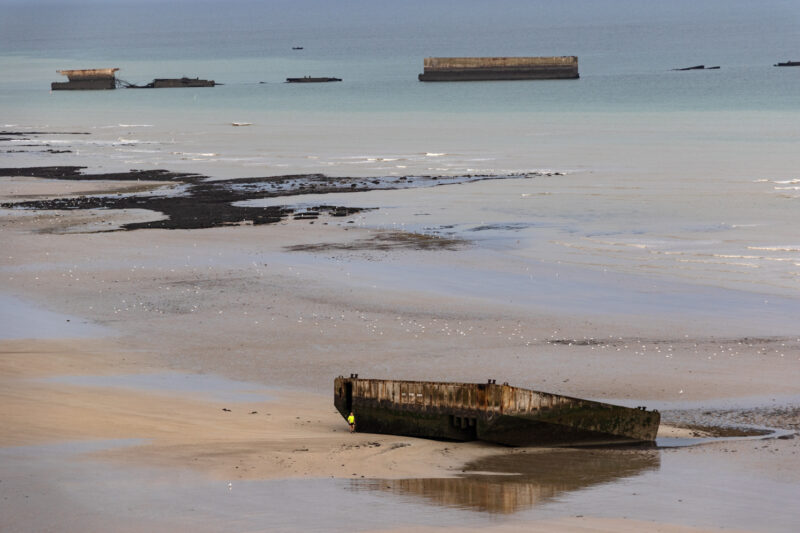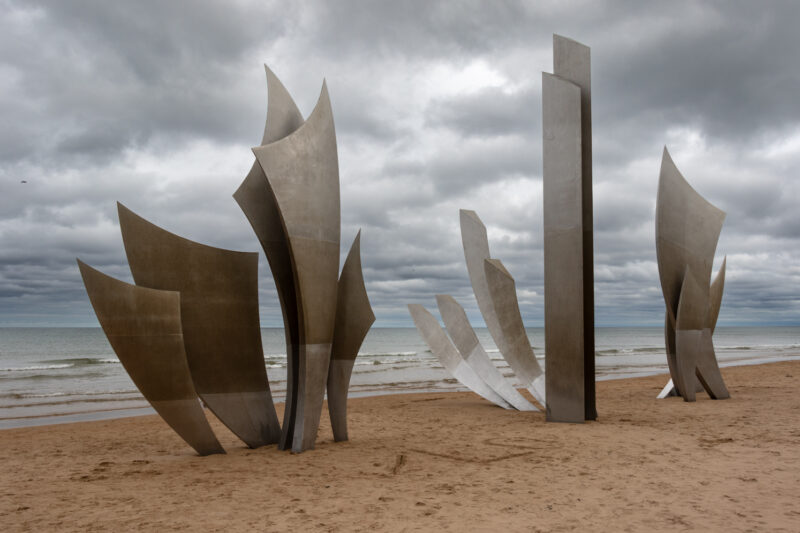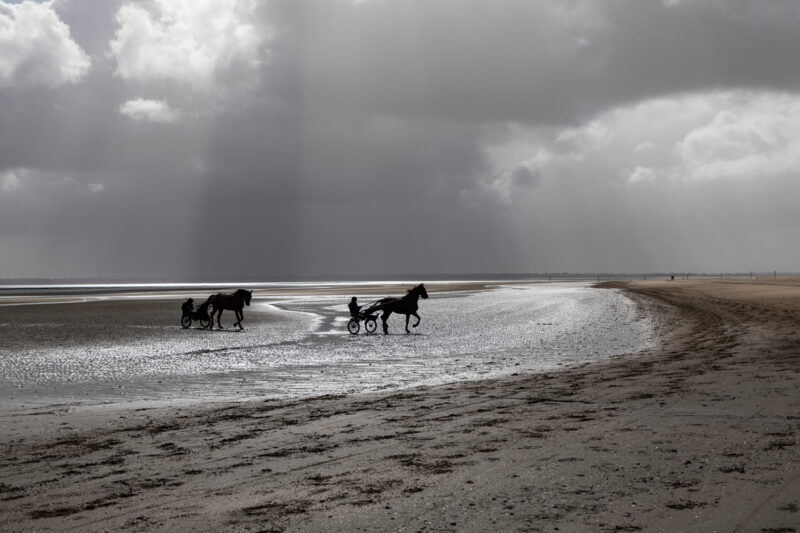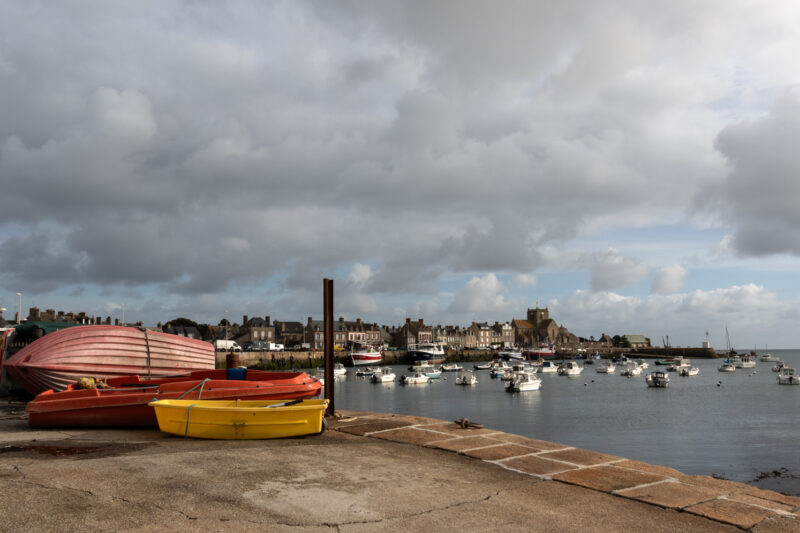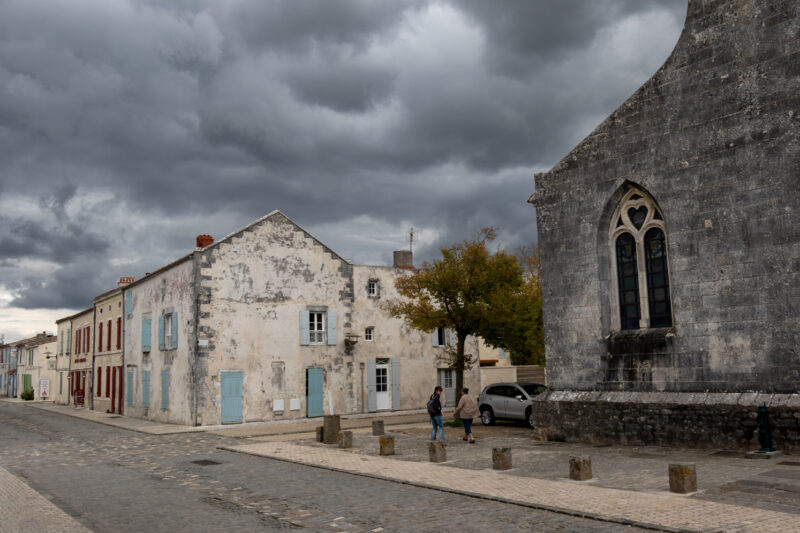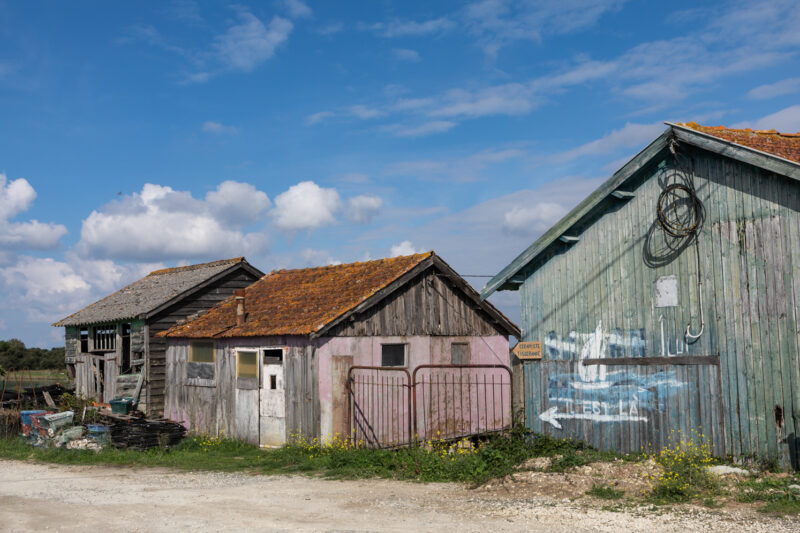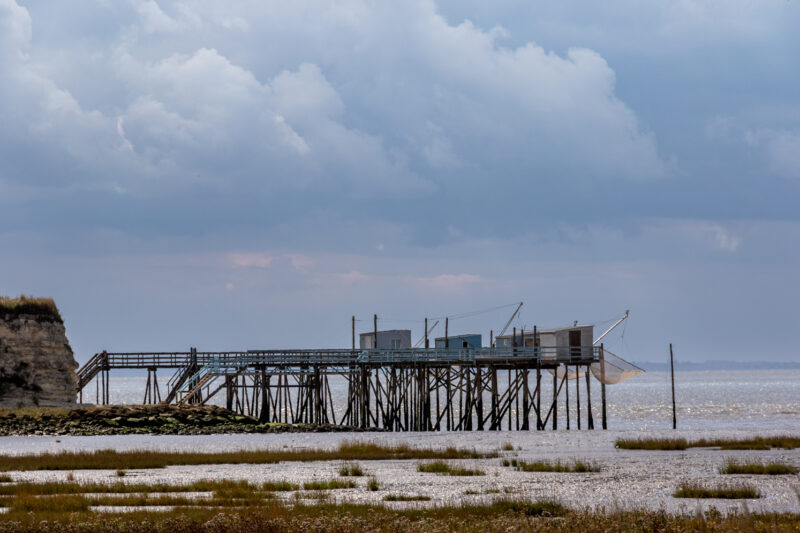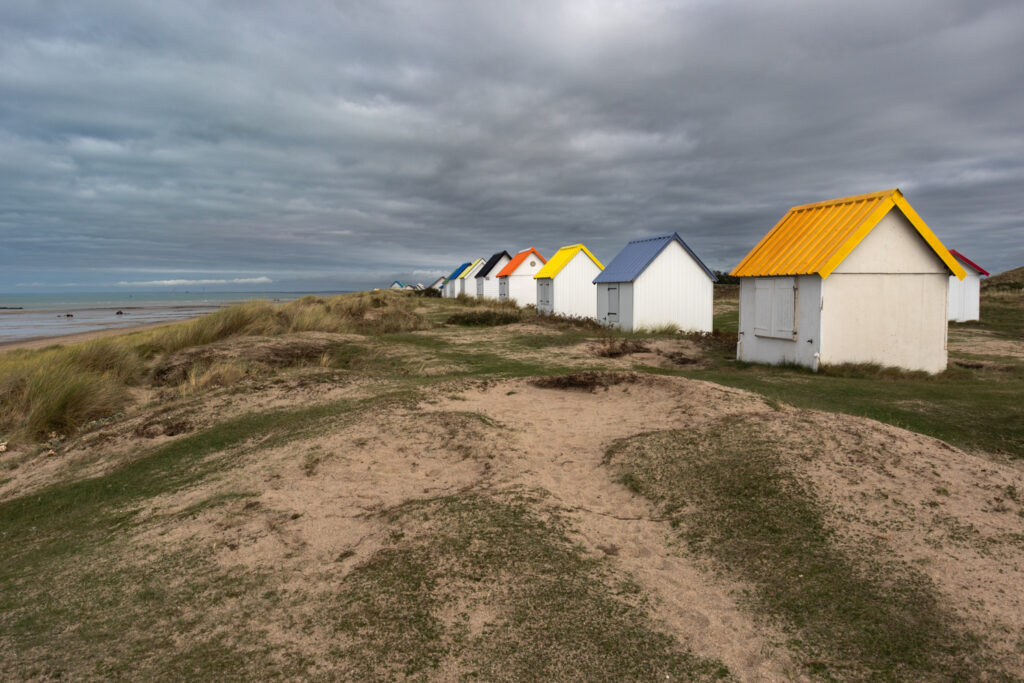Travelogue France September 2025
travelogue
France September 2025
In September 2025, we made a journey in France. We wanted to pick up a route in Normandy from the point where we had stopped during a previous trip, when we were heading for Spain. After Normandy, we continued further south along the Atlantic coast before heading northwards towards Zeeland via Cahors, taking a slightly more easterly route.
Period: 10 September 2025 – 1 October 2025. Distance: 3,590 km.
Photo series
The photos of France can be found in the France folder on SmugMug in the following series:
When you click on the name of the region, you will be directed to the pertinent series on SmugMug. Below is a small selection of our photos, intended as a preview.
Route
- Zeeland (NL) – Langemark – Poelkapelle (BE)
- Langemark- Poelkapelle (BE) – Mesnières-en-Bray (FR)
- Mesnières-en-Bray – Étretat
- Étretat – Fécamp – Pont de Normandie – Arromanches
- Arromanches – Colleville-sur-Mer- Omaha Beach – La Cambe -Utah Beach
- Utah Beach – Barfleur
- Barfleur – Greville-Hague – Jobourg – Lessay
- Lessay – Gouville-sur-Mer – Dragey-Ronthon
- Dragey–Ronthon – Pointe Grouin du Sud – Châteaubriant
- Châteaubriant – St.Florin-le Vieil – Cholet
- Cholet – Foussais-Payré
- Foussais-Payré – Maillezais – Arçais
- Arçais – Talmont-Saint-Hilaire
- Talmont-Saint-Hilaire – Brouage
- Brouage – Ile d’Oléron – Bourcefranc-le-Chapus – Brouage
- Brouage – Talmont-sur-Gironde
- Talmont-sur-Gironde – Fontet
- Fontet – Moissac
- Moissac – Cahors – Bouziès
- Bouziès – Saint-Cirq-Lapopie- Collonge-la-Rouge
- Collonge-la-Rouge- Montval-sur-Loire
- Montval-sur-Loire – Zeeland (NL)
Map of France with photo locations
Highlights of our trip
Étretat
Étretat, situated on the impressive Côte d’Albâtre in Normandy, is renowned for its spectacular chalk cliffs and natural arches such as the Porte d’Aval and the famous Aiguille. This charming seaside town has inspired artists like Monet and writers such as Maupassant with its unique light and dramatic landscapes.
We took a walk along the boulevard and the coastal path. The views of the cliffs and the azure blue sea are breathtaking. The sea was very rough, with winds at force 5. We also climbed up to Notre Dame de la Garde, which stands 83 metres high on a chalk cliff.
Photographically, it was an ideal day, with beautiful cloud formations and a wild sea. You really feel the power of the wind and water there.
Fécamp
Arromanches -les-Bains
Arromanches-les-Bains is a small coastal town in Normandy, best known for its role during the Second World War. After D-Day in June 1944, one of the famous artificial Mulberry harbours was constructed here, which enabled the Allies to land troops and equipment. The beach and the remains of the harbour are still clearly visible, serving as an impressive reminder of this historic event.
We spent a few hours walking along the beach. It was low tide, and the view over the sea, with the caissons still lying in the water, is both fascinating and undeniably melancholic.
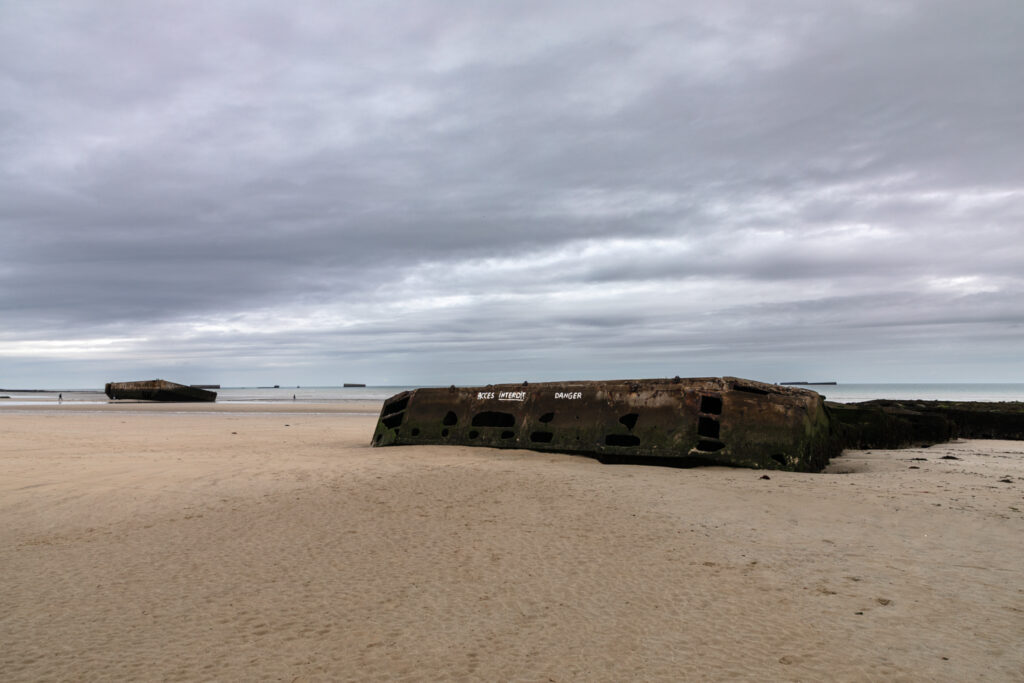
Colleville-sur-Mer
The American cemetery at Colleville-sur-Mer, officially known as the Normandy American Cemetery, is situated on a cliff overlooking Omaha Beach. Here lie almost 10,000 American servicemen who fell during the Battle of Normandy in the Second World War. The cemetery is striking for its endless rows of white crosses and Stars of David, symbolising the tremendous sacrifices that were made.
Back then, the Americans were still our allies. Much has changed since Trump came to power. These thoughts do cross your mind as you walk here, coupled with deep respect for the Americans who gave their lives for our freedom.
La Cambe
La Cambe is an impressive German military cemetery in Normandy, where more than 21,000 German soldiers from the Second World War have found their final resting place. The cemetery exudes a sombre and understated atmosphere, with low gravestones scattered across the lawn.
I personally find it quite difficult to visit a German cemetery. These were young soldiers who served as cannon fodder. That was dreadful. But the fact that these soldiers have a gravestone, not only here but also in other countries, including the Netherlands, makes it hard for me to accept that my grandfather’s grave was cleared and that nothing remains. My grandfather was shot off his bicycle on the first day of the war in the Netherlands and died. He was coming home from work, having milked the cows. Shot dead by a German soldier, right near his house. My mother was sixteen and struggled with this for the rest of her life.

Omaha Beach
Omaha Beach is perhaps the most famous of the Allied landing beaches in Normandy. It was here, on 6 June 1944—D-Day—that one of the fiercest and bloodiest battles took place. The wide stretch of sand is framed by steep cliffs and was heavily defended by the Germans, resulting in significant losses for the American troops as they attempted to capture the beach.
We found the sculpture, Les Braves, on the beach both striking and powerful. It is a tribute to the Allies who landed on Omaha Beach. The sculpture was created by Anilore Banon and was unveiled on 6 June 2004, during the commemoration of the 60th anniversary of the D-Day landings at Omaha Beach.
We visited on a Sunday, and the site was quite busy. The scene was reminiscent of something out of a Martin Parr photograph.
Utah Beach
Utah Beach is the westernmost of the five landing beaches in Normandy where the Allies landed on 6 June 1944, D-Day. In contrast to Omaha Beach, the landing at Utah proceeded relatively smoothly, thanks in part to the strong currents that brought the troops ashore slightly further south than planned. As a result, they encountered less German resistance than expected. Nevertheless, the conditions were harsh, with vast stretches of sand, minefields and barbed wire.
We walked across the beach—an immense expanse. The light was beautiful. We certainly paused to reflect on what happened here in 1944. Now it was peaceful. There were people with dogs and, in lovely backlight, horses galloping along the beach.
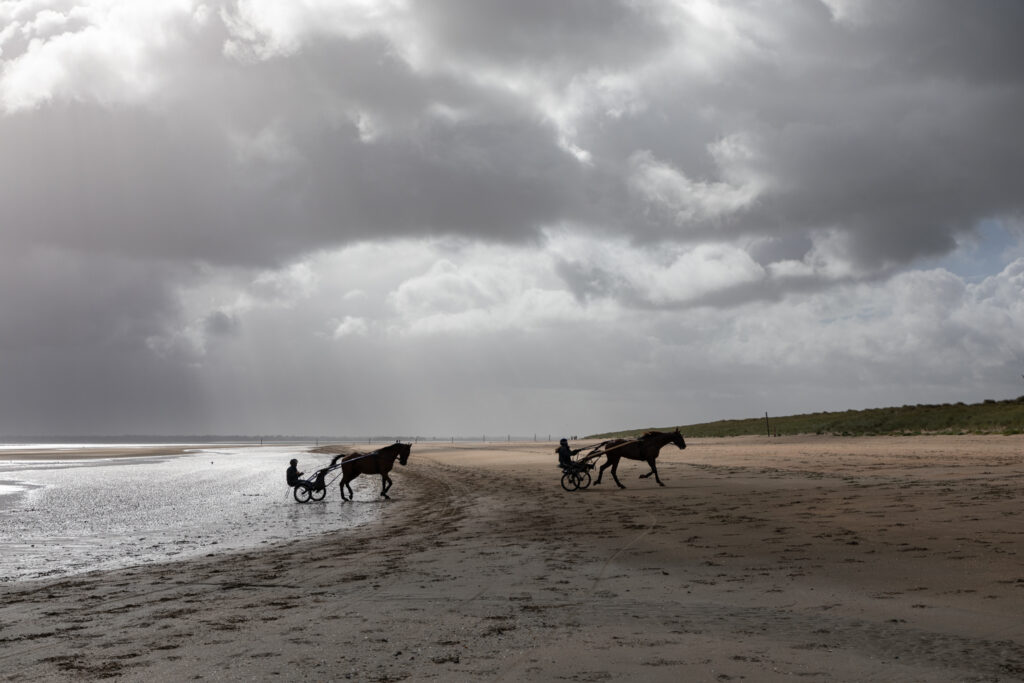

Barfleur
Barfleur is a picturesque fishing village on the Normandy coast, famous for its charming granite cottages and lively harbour. The village is recognised as one of the “plus beaux villages de France” and exudes an authentic atmosphere that instantly transports you back in time.
The harbour is quite unique. At low tide, a large part of it dries up, with the difference between low and high tide being around 2 metres.
The imposing church of Saint-Nicolas towers over the village and offers a splendid view over the sea. Barfleur is not large, but its narrow streets and the harbour make it a delightful stopover.
Cap de la Hague
Cap de la Hague is a rugged and unspoilt peninsula at the far north-western tip of the Cotentin Peninsula, renowned for its impressive cliffs, lighthouses, and panoramic sea views. The landscape here is spectacular, featuring craggy rock formations, narrow walking paths, and small, hidden beaches where the wind always has free rein.
We took a walk by the lighthouse and lifeboat station. In the villages surrounding Cap de la Hague, you can find traditional granite cottages.
Dragey-Ronthon
Dragey-Ronthon is a peaceful village on the bay of Mont Saint-Michel, situated in the south-west of Normandy. It is especially known for its expansive beaches and magnificent views of the abbey of Mont Saint-Michel, particularly at low tide when the sand flats seem to stretch endlessly.
Close to Dragey-Ronthon lies Pointe Grouin du Sud. From here, you also have a stunning view of Mont Saint-Michel and you can go “mudflat walking” across to Mont Saint-Michel. Nine years ago, we took walks on the other side of the bay. Mont Saint-Michel is a beautiful landmark.

St.Florin-le Vieil
St. Florin-le-Vieil is one of the 160 Petites Cités de Caractère. This label was created in 1970 to protect and promote small rural villages. There are several criteria, such as population (fewer than 6,000 inhabitants), rich history, and so on.
The village certainly has character, particularly thanks to its former abbey church. Its location on the Loire also makes it something special.
A distinctive feature of St. Florin-le-Vieil is the traditional game “Jeu de boule de sable”. This is a local variant of the well-known jeu de boules but played on a sand court instead of gravel or grass. The game brings the villagers together and is especially popular during village festivals and summer gatherings.
Foussais-Payré
Foussais-Payré is a charming village located in the Vendée. The village is renowned for its rich medieval heritage and atmospheric streets lined with beautiful old houses built from natural stone. One of the highlights is the impressive Romanesque church, whose portal is lavishly decorated with sculptures. In addition, Foussais-Payré boasts a former priory and various historical buildings, such as the old market hall and traditional washhouses (lavoirs). This village is also classified as one of the ‘Petites Cités de Caractère’.
Cathédrale Saint-Pierre de Maillezais
In fact, it is a ruin of a Roman Catholic church in the commune of Maillezais in the Vendée. Originally constructed as an abbey in the 10th century, it later became a cathedral in the 15th century. It is an impressive, colossal monument.
Brouage
Brouage is a picturesque, fortified town set amidst the marshes between Rochefort and Ile d’Oléron, located in the Charente-Maritime department, not far from the Atlantic coast. Once, it was an important port town for the salt trade, but as the sea silted up, it lost its maritime function. The impressive town walls and bastions, designed by renowned military engineers such as Vauban, are still wonderfully preserved and lend the village a unique character.
We took a walk along the ramparts, where you have beautiful views over the surrounding marshes and the old salt pans. The centre is distinguished by narrow streets, charming squares, and old stone houses that reflect Brouage’s rich past. Notable sights include the Eglise Saint-Pierre, the old arsenal, and the gates of the fortress. Brouage is listed among ‘Les Plus Beaux Villages de France’.

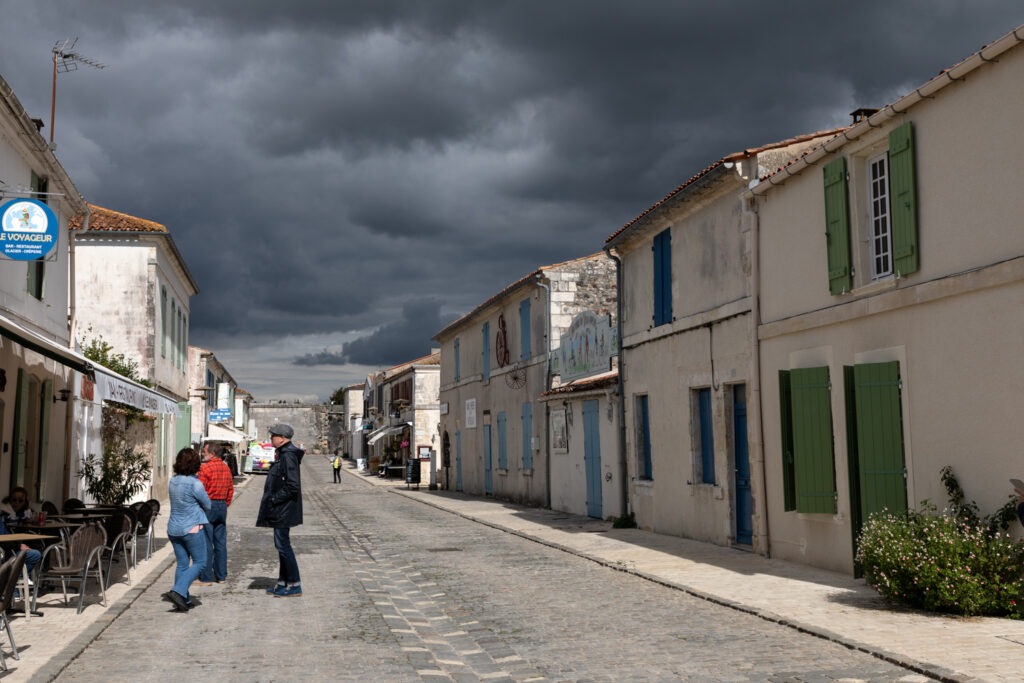
Île d’Oléron
Île d’Oléron, the second largest island in France, lies on the Atlantic coast and is connected to the mainland by an impressive bridge. We took a day trip there—perhaps not the wisest idea, as it is very touristy. Nevertheless, it is certainly a beautiful island.
We visited several of the island’s highlights:
- The salt marshes at the Port des Salines museum
- Saint-Trojan-les-Bains, with its colourful houses
- La Cotinière
- La Baudissière
Bourcefranc-le-Chapus
Bourcefranc-le-Chapus is a charming village on the Atlantic coast, close to Île d’Oléron. The town is especially notable for its seaside location, offering impressive views of the water and the famous bridge to Oléron. One of its most well-known sights is Fort Louvois, a 17th-century sea fort that can be reached on foot via a causeway at low tide. The village has a relaxed atmosphere and is perfect for a stroll along the harbour or through its peaceful streets.
Talmont-sur-Gironde
Perched on a rocky headland at the mouth of the Gironde, this little village offers breathtaking views over the estuary. The centre of Talmont is a tangle of winding lanes lined with white houses, blue shutters, and colourful hollyhocks, all typical for the region.
The Eglise Sainte-Radegonde, a Romanesque church from the 12th century, is an absolute eye-catcher, towering above the cliffs with a panoramic outlook across the river. Around the church lies a sailors’ cemetery. The old town walls and the charming little harbour complete the picture. The village is also listed among ‘Les Plus Beaux Villages de France’.
Along the Gironde you’ll find many wooden fishing huts on stilts, known by the French as “carrelets”. Pêche du carrelet is a fishing method using a lift net. We took a walk along the “carrelets”, which, as photographers, we found particularly fascinating.
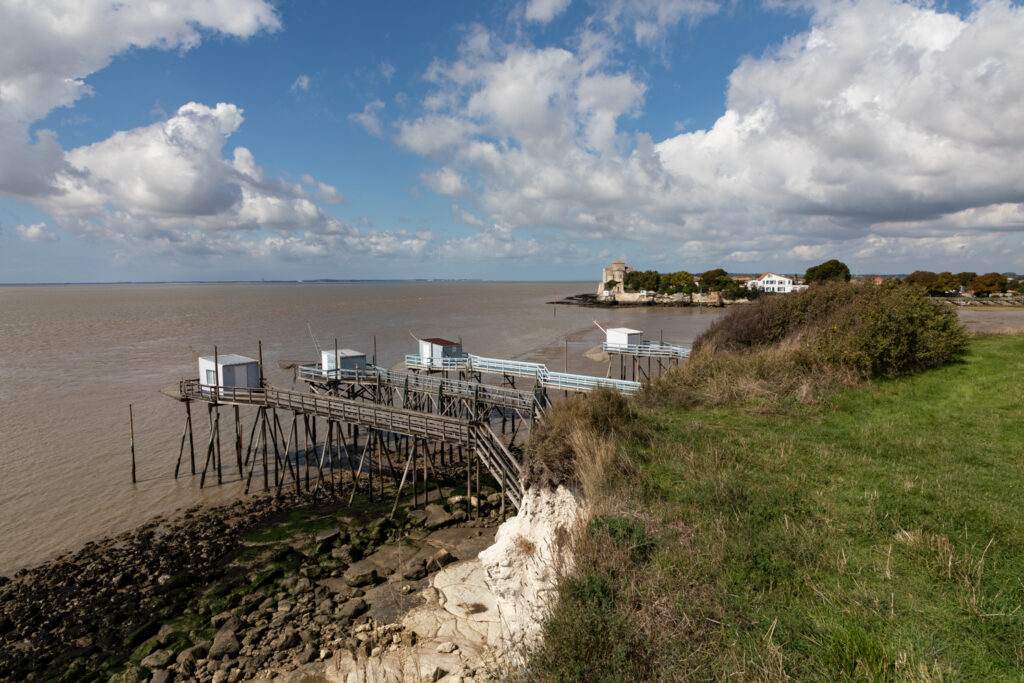
Collonge-la-Rouge
Collonge-la-Rouge is a unique village in the Corrèze department, renowned for its striking red sandstone from which almost all houses and buildings are constructed. Collonge-la-Rouge is also one of ‘Les Plus Beaux Villages de France’. As you stroll through the village, you pass historic mansions, ancient towers and shops selling local products. In particular, the Romanesque church of Saint-Pierre and the old town hall are well worth a visit.
Moissac

Cahors
Cahors, situated in the heart of the Lot department, is a city renowned for its rich history, atmospheric medieval streets, and beautiful setting in a bend of the River Lot. The absolute showpiece of Cahors is the Pont Valentré, an impressive medieval bridge with three towers, which is listed as a UNESCO World Heritage site.
We visited the bridge first. After that, we walked to the old historic centre. Here you’ll find another masterpiece of Gothic architecture: the Cathédrale Saint Étienne de Cahors. The church’s interior is also very beautiful, with richly decorated capitals and extensive stained-glass windows.
Saint-Cirq-Lapopie
Saint-Cirq-Lapopie is one of the most picturesque villages in France, perched high on a steep cliff above the River Lot. The village is a maze of medieval streets and old half-timbered houses with red tiled roofs. The view from the village over the stunning Lot valley is truly breathtaking. It is no surprise that Saint-Cirq-Lapopie has been listed for many years among ‘Les Plus Beaux Villages de France’ and was once named the favourite village of the French.
We arrived on a Sunday, and it was absolute chaos. Navigating our campervan was quite a challenge. We found a lovely spot in Bouziès by the Lot and visited the village on a now peaceful Monday.
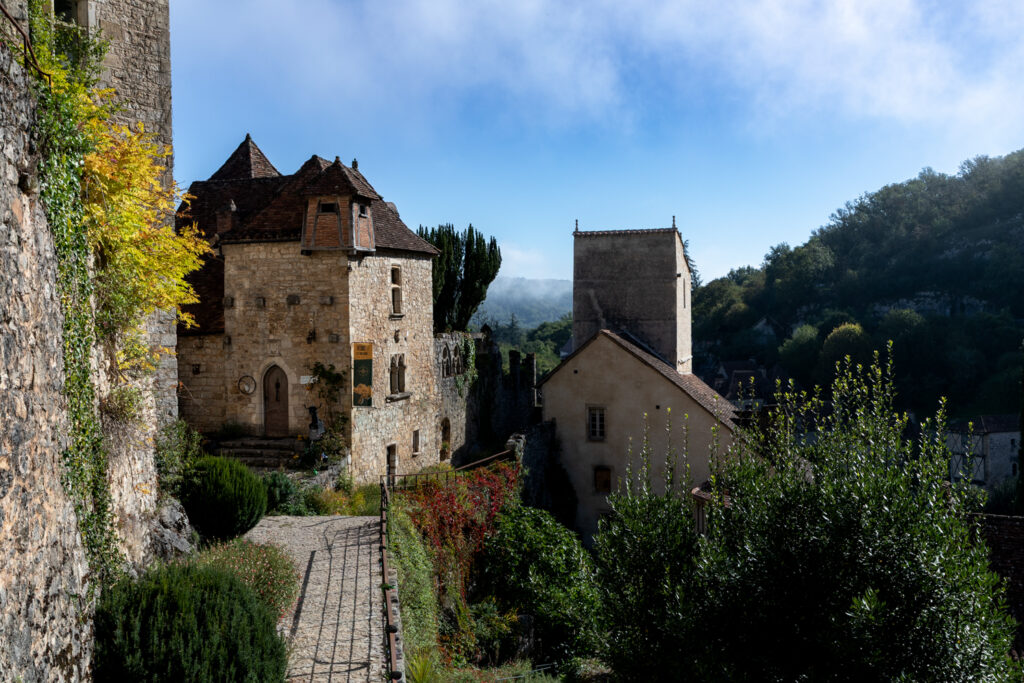

Travel guides
This time we took only travel guides in the Dutch language. The Michelin guides are also printed in English.
Comments are closed.





